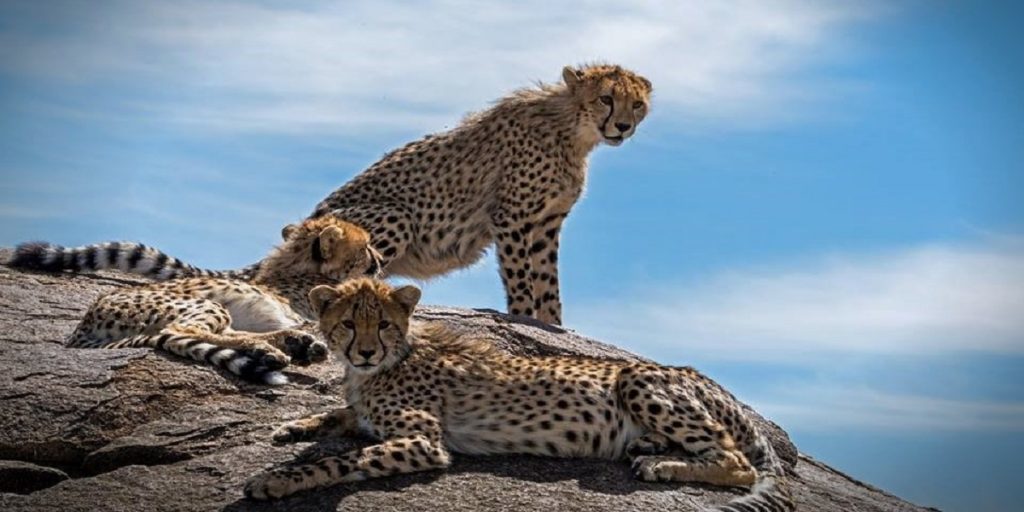Best Time To Visit Serengeti National Park-Month by Month Guide 2024
The Best time to visit Serengeti National Park is from January-February or from June through to October and these are considered to be the best Months and time to visit Serengeti National Park. However tourists can Plan their Serengeti National Park Tour based on the movement of the great migration.
Best Times to visit Serengeti National Park Month by Month Guide
January to end March
During this time of the year, volumes of wildlife gather on the southern Serengeti and Ndutu plains. This is the best time to experience the great migration characterized with the flat green plains and uninterrupted views and best opportunities to watch the massive movement of wildlife. Tourists should note that from January to March an estimated 8,000 calves are born into their various wildebeest, zebra, Thomson’s gazelle and eland families. The newborns are fragile and easy targets for predators and tourists will watch Lions, cheetahs, hyenas and even jackals scramble for opportunities to fill their bellies.
July to September
Around this time of the year, the great migration safaris hold the excitement of herds crossing the Mara River. Watch the animals enter the water as individuals are taken by crocodiles. Their sacrifice secures the survival of this extraordinary journey of species.
Travelers should note that these two periods (January to March and July to September) are the best times to experience the most thrilling migration activity.
From April to June, once the bulk of their youngsters have found their feet, the herds continue their journey north in search of new grass. The long rains of April and May provide enough water and grazing for the animals to spread out over the entire southern Serengeti plains. From east to west they split up into smaller herds in a slow but definite move towards the north.
From October to December the herds are scattered throughout the greater Masai Mara conservancies (often even into Loliondo) and the hills and valleys of the north-eastern Serengeti. At this time of year it’s not uncommon to find animals in front of your camp in the evening. However, they will have disappeared by the following morning, having continued their journey southwards. This leg of the migration happens in stages and the herds split up into even smaller herds and groups.
May and June
In April and May rains start flowing in the Serengeti on a daily basis to an extent of closing many seasonal roads surrounding the area.
Therefore May and June make it into the top three best possible times to see wildebeest herds on migration safaris. In June and July herds are harder to track on migration safaris, with the limited road network and private Grumeti R eserves concession in the way.
October to December
By October, the animals have eaten all the grass in the Mara plains and are propelled to venture south once more to find fresh grazing. Remarkably, they arrive on the plains at Ndutu a few days after the first rain of the season has fallen. The herd leaves decent-enough grazing at Lobo and the Bologonja Springs and set off southwards again across the eastern and central savanna woodland.
Here, the animals spread out to areas with water and grazing that allow them to be within striking distance of the Ndutu lakes and plains. During this time predators often lurk in the Lobo grass.

Serengeti Wildebeest Migration Safari guide Month by Month
Most first time travelers think that the great wildebeest migration only happens once a year, but the migration is in fact an all year round event with each time of year offering a unique migration experience.
Below is a Month by Month Serengeti migration guide on what to expect each month in terms of weather, wildlife, migratory movements, predator interactions and river crossings to ensure you get the most out of your safari trip to see the great wildebeest migration.
- In January there is a lot of movement from north to south as the herds await the first Serengeti rains and like June, it is a hard month to predict because the herds’ movements depend on when it starts to rain on the southern plains. Female wildebeest are carrying calves and are almost ready to give birth the reason the herds move swiftly in search of favorable grasslands to provide sustenance for the arrival of their young.
- Around February the calving season starts and this is a period when wildebeest, zebra and other migratory animals give birth to their offspring and once the calves are born the herds don’t move much hence a high chance of witnessing a wildebeest birth and predators is high.
- Noted as the last month mobile camps operate, March is fairly wet with lush and green grasslands and as a result wildebeest herds move slowly and predictably to able to feed the calves. This also makes it possible to have predators such as lions and leopards around.
- April is wet in the Serengeti with long rains that happen mostly in the evenings with clear days the reason you should carry with you a raincoat. The herds are starting to move a little bit faster as the calves and foals get mobile the reason we highly recommend April as one of the best times to see wildebeest herds.
- May is a great time for wildlife action photography because at this time of the year the herds are gathering speed and the calves are fully operational and moving quickly to the Serengeti’s western corridor. However May is the wettest Month in Serengeti and roads tend to get slippery and tricky to navigate.
- June is traditionally the Grumeti River crossing period though the intensity and drama of the crossing depends on the water levels of Grumeti River which occassionaly sees raised levels like the Mara River sees in July and August. Expect a rewarding experience in June as the herds will be spread out.
- July marks the start of the Mara River crossings as well as mating season in the Serengeti and since it’s a dry season with a more arid Serengeti, the wildebeest herds begin moving faster in search of water and greener grass making their way across Grumeti River and Mara River where crocodiles are encountered.
- August is arguably the best month to see the dramatic Mara River crossings in the Serengeti or Masai Mara and it’s the time the dry season kicks into overdrive. The herds are continuing their search for greener grass making their way across the crocodile infested Mara River.
- September is one last chance to see the epic Mara River crossings in the Serengeti or Masai Mara and around this time its more hot and dry in both Serengeti and Masai Mara. Most of the wildebeests have already crossed into the greater Masai Mara area and are enjoying the lush green resources before venturing North wards.
- Around October the weather is milder as the dry season approaches its climax. The Month is a good time to see the wildebeest herds move back into the Serengeti through the Loliondo in the East.
- In November early rains start to fall with cooler weather and the wildebeest herds are now in Serengeti Lobo, Seronera Valley and Mbuze Mawe therefore a good time to see the wildebeest in the Serengeti.
- December is a busy and wet month and the wildebeests are moving quicker towards the south plains hence being another time you can track the herds in the Serengeti.
INQUIRE NOW for information, inspiration or a Price Quotation of the different Migration safari Itineraries below:
Best Serengeti Migration safari Tours, Holidays
3 days Serengeti Migration Safari tour
4 Days Serengeti National park Safari
6 Days Tanzania Migration Safari
16 Days Uganda Gorilla trekking,Serengeti Migration and Zanzibar Beach Holiday Safari
8 Days Rwanda Gorillas Tanzania Migration Safari

